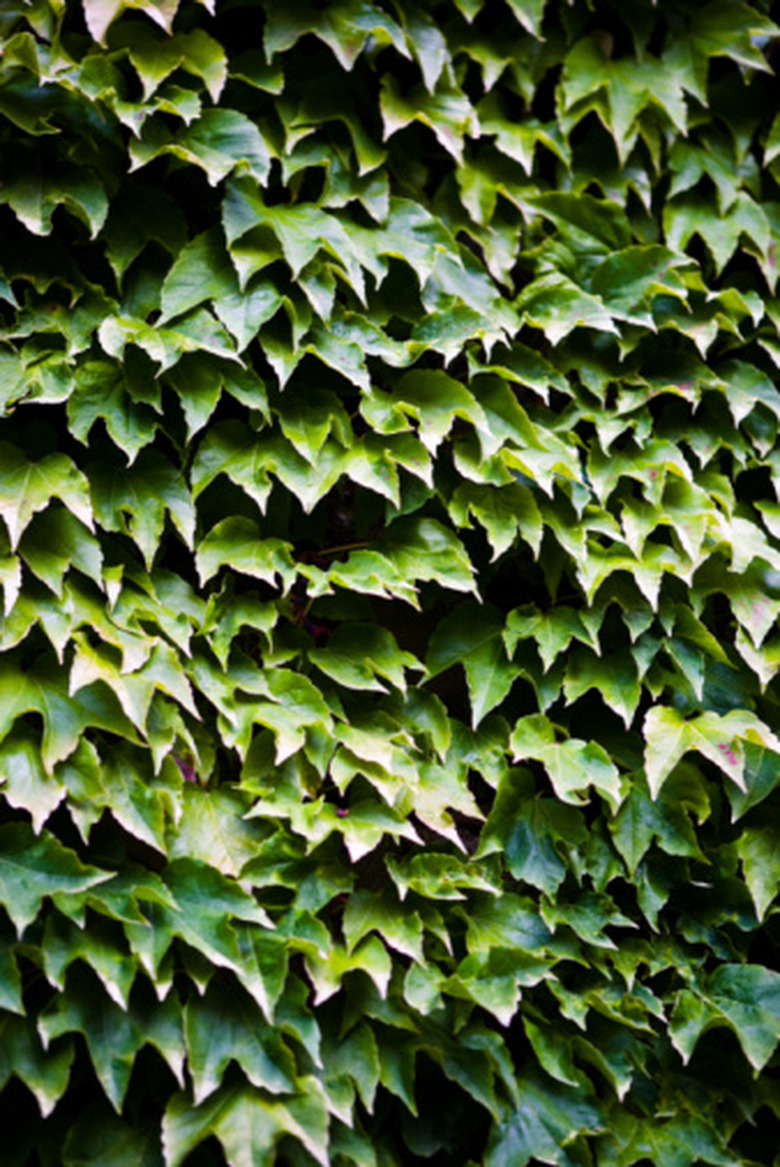How To Remove Ivy Tendrils From Stucco
Things Needed
- Garden shears
- Leather work gloves
- Soft-bristled brush
Tip
Although cutting the vines into a grid reduces the chance vines will pull long stretches of stucco off your home, you must not force the vines free of the stucco. If you missed a vine, you could tear an entire section of stucco off your wall. Also, if you pull a green vine, it might have tendrils that tear tiny patches off your stucco. Depending on the extent of coverage, you might have to repaint your stucco because large areas of ivy can create a "clean" patch of stucco that will stand out against the rest of the wall.
Warning
Some people advise you to kill the vines with bleach. Bleach can make your stucco spotty and ruin the coloration created by natural aging. Also, bleaching can give you a false sense that the vines have died. If you tug them, they could uproot your stucco.
Improperly removing ivy from stucco walls will peel the stucco off your wall. Because ivy has tendrils that grow into cracks or crevices, hastily removing vines can tear sections of stucco right off your wall. Unfortunately, successfully removing ivy will still peel some stucco off or result in cracks. To minimize damage, you must take the right strategy with your ivy removal project.
Step 1
Snip the ivy's roots using the garden shears. If the ivy grows up from the ground, snip along the base of your home. If it descends from nearby trees, sever the connection from above.
Step 2
Snip the ivy attached to the face of your house in 12-inch by 12-inch sections. For instance, use the shears as a pair of scissors and cut all the vines along the face of your wall.
Step 3
Cut additional lines across the ivy, making sure to cut approximately 12 inches apart.
Step 4
Cut vertical lines through the ivy, making sure you keep each line approximately 12 inches apart.
Step 5
Allow this "grid" of cut ivy to dry and die for approximately two to four weeks.
Step 6
Pull dried vines off the wall, gently pulling until you receive resistance from a still-green vine. Make sure you wear your leather gloves.
Step 7
Cut resisting vines using the shears. Allow the bits and pieces of vine remnants to die for another two to four weeks.
Step 8
Remove larger sections of dried vines by hand.
Step 9
Brush the remaining dried vine fragments off using a soft-bristled brush.
References
- "Black & Decker Outdoor Fix-It 101: Projects You Really Can Do Yourself"; Steve Wilson; 2007
